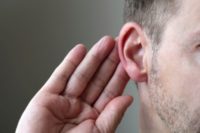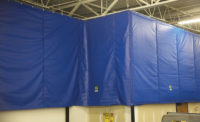NIOSH Science Blog
Turn it down: Reducing the risk of hearing disorders among musicians

By Chuck Kardous, Thais Morata, Christa Themann, Patricia Spears, and Sue Afanuh
Have you ever gone to a concert or performance and found your ears ringing on the way home? Imagine if that was your job and your ears were exposed regularly to such loud sound levels? Orchestra players, music teachers, conductors, DJ’s, band members, singers, sound engineers, and many others may be exposed to dangerously high music levels as part of their work. Professional musicians work and practice in a variety of venues, ranging from large music halls, theatres, and arenas to smaller clubs or music rooms in schools and universities. Overexposure to sound, both in terms of intensity and duration, is common. Musicians value and need good hearing for their jobs, but many are not fully aware of the risks associated with exposure to potentially harmful sound levels or the options for reducing these exposures without compromising their performance abilities.
Recently, NIOSH received a request for assistance in measuring and mitigating exposures during school band rehearsals (see the Health Hazard Evaluation report . Several professional musicians’ groups are starting to recognize the burden of hearing loss and tinnitus among musicians, and some have encouraged NIOSH to conduct research and provide guidance towards prevention (see input received in a public NIOSH Docket. As a result, NIOSH recently developed a Workplace Solutions document: Reducing the Risk of Hearing Disorders among Musicians. The document provides scientific justification, clarification, and an evidence-based perspective that musicians can trust and apply in their work and musical activities. Because being able to hear music is part of musicians’ work and the music is the direct result of the musicians’ deliberate action (vs. a side effect of heavy machinery), common “industrial” hearing conservation solutions may not be appropriate or effective.
Musicians have irregular and unpredictable exposures, and their work schedules are considerably different from those of typical industrial workers. Effective interventions must be behavioral and rely primarily on awareness, knowledge, competency, and accountability of those producing music.
NIOSH recommends that employers, music venue operators, schools and colleges, consider the following actions to reduce potential hearing damage for musicians, music teachers and students, and other exposed workers:
Looking for a reprint of this article?
From high-res PDFs to custom plaques, order your copy today!







